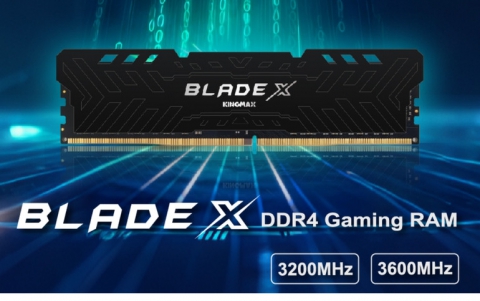
Intel Plans New Intel Atom Processor-based System-on-Chip
Two Intel executives today outlined the latest Intel system-on-chip (SoC) products for embedded applications. Intel unveiled the upcoming "Tunnel Creek" System-on-Chip (SoC) for IP phones, printers and in-vehicle-infotainment systems for cars.
The forthcoming SoC product features an Intel Atom processor core that, for the first time, will let other companies create PCI Express-compliant devices that directly connect to the chip, which offers new flexibility for embedded applications.
Doug Davis, corporate vice president and general manager of Intel's embedded and communications group, disclosed at IDF 2010 in Beijing details on a future Intel product code-named "Tunnel Creek" during his speech. This SoC for embedded applications, such as in-vehicle-infotainment and IP media phones, will use a standard interconnect to the processor. Tunnel Creek is based on Intel's Moorestown system-on-a-chip and combines an Intel Atom processor core, the memory controller hub, graphics engine and video engine into one chip. The new Atom chip also features enhanced graphics capabilities, according to Intel.
The chip will also enable companies to connect their own custom-built silicon to the Intel chip as long as it is a PCI Express compliant. The flexibility in this highly integrated one-chip solution helps reduce bill of materials and saves on board real estate for embedded applications.
Intel also highlighted work with HawTai, a major Chinese car maker that plans to use Intel Atom processors and MeeGo software for their in-car infotainment systems.
In addition, China Mobile, the world's largest wireless telecommunications company, will adopt Intel chips for targeted platforms powering its wireless networks.
Davis outlined Intel's vision of applying the IT industry's compute and cloud model to the telecom industry by consolidating network workloads on a single architecture. He said worldwide telecom leaders are endorsing Intel architecture for targeted platforms in their next generation infrastructure, including Alcatel-Lucent, Ericsson, Hauwei and ZTE.
On stage, Dr. Cui Chunfeng, manager of wireless research labs, department of wireless communications, China Mobile Research Institute discussed how the largest wireless company in the world will partner with Intel in developing its next generation wireless network infrastructure to help move China Mobile into a 'compute and cloud' model.
Following Davis on stage, Intel Chief Technology Officer and managing director of Intel Labs, Justin Rattner, discussed how smarter technology at home and at work can reduce and better manage energy consumption. Rattner said the company's goal is to apply Intel technology in ways that empower consumers and small businesses to make better energy choices.
Researchers at Intel have invented a new wireless device to make the collection of energy data easy and inexpensive for consumers. The experimental sensor need only be plugged into the house wiring to instantaneously measure and wirelessly report the power consumption of each electrical load in the home. The technology could be easily deployed by consumers to analyze energy usage of devices and appliances throughout a home.
Rattner also demonstrated a working prototype of an Intel-powered home energy display that when coupled with the wireless energy sensor, would monitor performance, recommend solutions for more efficient usages, set goals, and reward success. The pair of devices forms the heart of a personal energy management system that could help a U.S. household save up to $470 per year in electricity costs. Given that the U.S. has 113 million households, the potential savings is over $50 billion a year. If only one percent of U.S. households were to realize this savings, it could reduce annual coal demands by 371,000 tons and reduce carbon emissions by 2.4 million metric tons, or the equivalent of taking 535,000 cars of the road.
Record Q1 results
In related news, Intel today reported first-quarter revenue of $10.3 billion. The company reported operating income of $3.4 billion, net income of $2.4 billion and EPS of 43 cents. "The investments we're making in leading edge technology are delivering the most compelling product line-up in our history," said Paul Otellini, Intel president and CEO. "These leadership products combined with growing worldwide demand and continued outstanding execution resulted in Intel's best first quarter ever. Looking forward, we're optimistic about our business as Intel products are designed into a variety of new and exciting segments."
Doug Davis, corporate vice president and general manager of Intel's embedded and communications group, disclosed at IDF 2010 in Beijing details on a future Intel product code-named "Tunnel Creek" during his speech. This SoC for embedded applications, such as in-vehicle-infotainment and IP media phones, will use a standard interconnect to the processor. Tunnel Creek is based on Intel's Moorestown system-on-a-chip and combines an Intel Atom processor core, the memory controller hub, graphics engine and video engine into one chip. The new Atom chip also features enhanced graphics capabilities, according to Intel.
The chip will also enable companies to connect their own custom-built silicon to the Intel chip as long as it is a PCI Express compliant. The flexibility in this highly integrated one-chip solution helps reduce bill of materials and saves on board real estate for embedded applications.
Intel also highlighted work with HawTai, a major Chinese car maker that plans to use Intel Atom processors and MeeGo software for their in-car infotainment systems.
In addition, China Mobile, the world's largest wireless telecommunications company, will adopt Intel chips for targeted platforms powering its wireless networks.
Davis outlined Intel's vision of applying the IT industry's compute and cloud model to the telecom industry by consolidating network workloads on a single architecture. He said worldwide telecom leaders are endorsing Intel architecture for targeted platforms in their next generation infrastructure, including Alcatel-Lucent, Ericsson, Hauwei and ZTE.
On stage, Dr. Cui Chunfeng, manager of wireless research labs, department of wireless communications, China Mobile Research Institute discussed how the largest wireless company in the world will partner with Intel in developing its next generation wireless network infrastructure to help move China Mobile into a 'compute and cloud' model.
Following Davis on stage, Intel Chief Technology Officer and managing director of Intel Labs, Justin Rattner, discussed how smarter technology at home and at work can reduce and better manage energy consumption. Rattner said the company's goal is to apply Intel technology in ways that empower consumers and small businesses to make better energy choices.
Researchers at Intel have invented a new wireless device to make the collection of energy data easy and inexpensive for consumers. The experimental sensor need only be plugged into the house wiring to instantaneously measure and wirelessly report the power consumption of each electrical load in the home. The technology could be easily deployed by consumers to analyze energy usage of devices and appliances throughout a home.
Rattner also demonstrated a working prototype of an Intel-powered home energy display that when coupled with the wireless energy sensor, would monitor performance, recommend solutions for more efficient usages, set goals, and reward success. The pair of devices forms the heart of a personal energy management system that could help a U.S. household save up to $470 per year in electricity costs. Given that the U.S. has 113 million households, the potential savings is over $50 billion a year. If only one percent of U.S. households were to realize this savings, it could reduce annual coal demands by 371,000 tons and reduce carbon emissions by 2.4 million metric tons, or the equivalent of taking 535,000 cars of the road.
Record Q1 results
In related news, Intel today reported first-quarter revenue of $10.3 billion. The company reported operating income of $3.4 billion, net income of $2.4 billion and EPS of 43 cents. "The investments we're making in leading edge technology are delivering the most compelling product line-up in our history," said Paul Otellini, Intel president and CEO. "These leadership products combined with growing worldwide demand and continued outstanding execution resulted in Intel's best first quarter ever. Looking forward, we're optimistic about our business as Intel products are designed into a variety of new and exciting segments."





















